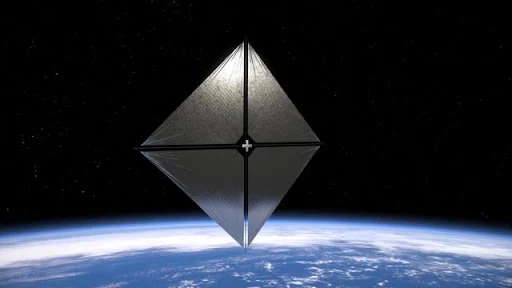NASA's solar sail system, called the Advanced Composite Solar Sail System (ACS3), is a technology demonstration mission that aims to test the deployment of a large, ultralight sail in space. The sail is made of a reflective material that can be propelled by the pressure of sunlight. This mission is a big step forward for solar sail technology, which has the potential to revolutionize space travel.
Concept: Inspired by sailboats, NASA's solar sail system uses the pressure of sunlight instead of rocket fuel for propulsion. A large, reflective sail unfurls in space, and photons from the Sun bounce off the sail, generating a gentle thrust that propels the spacecraft.
Benefits: Solar sails offer several advantages:
Low-cost: No propellant needed, reducing launch costs.
Long-duration missions: Can continuously accelerate for extended periods.
Access to new destinations: Enables missions with trajectories impractical for traditional rockets.
Current Mission: Advanced Composite Solar Sail System (ACS3)
Launched April 23, 2024 (planned) aboard a Rocket Lab Electron rocket.
Goal: Demonstrate the functionality of deployable composite booms and maneuverability using sunlight pressure.
Sail size: Approximately 30 feet (9 meters) on a side when deployed.
Paves the way for larger sails in future missions.
Significance:
The success of ACS3 is a major step forward in solar sail technology. It proves the viability of composite booms for larger sails and paves the way for future missions to the Moon, Mars, and beyond.
What is ACS3?
ACS3 is a technology demonstration mission testing new materials for solar sail booms. Solar sails rely on sunlight pressure for propulsion, unlike traditional rockets that use propellant. ACS3 aims to prove this technology can be a viable option for future space missions.
ACS3 Mission Details
- Launched in April 2024 aboard a Rocket Lab Electron rocket .
- Uses a toaster oven-sized CubeSat to deploy a sail about the size of a small apartment.
- The key aspect is testing the composite boom materials which are designed to be stiffer and lighter than previous designs.
- The mission will test boom deployment and hopefully demonstrate the sail's ability to maneuver by adjusting its angle.
Benefits of Solar Sails
- They don't require propellant, leading to potentially lower cost and longer duration missions .
- Solar sails could be used for various purposes, including deep space exploration, asteroid reconnaissance, and communication relays.
Further Exploration:
- For a detailed look at ACS3, visit the NASA website: NASA Advanced Composite Solar Sail System: https://www.nasa.gov/mission/acs3/


